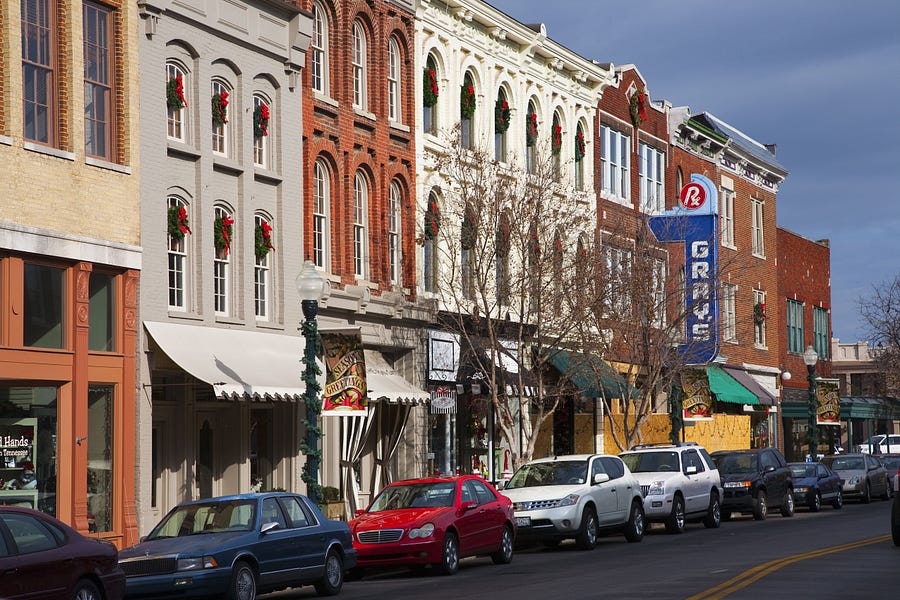President Trump’s recent attempts to pit the suburbs against cities inadvertently cast a light on his more general problem with metropolitan areas. Claiming to protect the “Suburban Lifestyle Dream” (an expression unfamiliar to suburbanites) in describing his opposition to an Obama-era low-income housing program, Trump betrayed an ignorance of the socioeconomic diversity of the suburbs, which a number of critics rightly noted. The truth is, suburbs have more in common with the cities they surround than not.
But even critics mostly regard suburbs and cities as distinct geographic units defined by their differences. On one level, this is understandable. Suburbs and cities are governed by different municipal authorities, and suburban areas have long been the landing pad for urban flight. But the division between cities and suburbs and the “urban-rural” divide we hear so much about are mostly sideshows. They mask a much more distinct schism between metro areas, which include much of the suburbs, and non-metro small towns and rural areas.
In a recent American Enterprise Institute survey, urban and suburban respondents were aligned with one another other on important issues, and the same held true for residents of small towns and rural areas. For instance, 52 percent of city dwellers and 48 percent of suburbanites said “not at all” when asked whether Trump is acting in the best interest of the public, compared with 38 percent of people in small towns and 32 percent of rural residents. This split is especially notable given that Americans in all geographic categories have similar views of how much the federal government, their local government, and national and local media act in the best interest of public. When it comes to key institutions, Americans don’t differ much. When it comes to Donald Trump, the suburbs are much more urban than rural.
One of the more telling differences between metro and non-metro—or, let’s say “heartland”—residents concerns the question of scientists. Only a third of metro dwellers say that scientists are as likely to be as biased as anyone, compared with 43 percent of heartland residents. More than 41 percent of metro residents have “a great deal” of confidence that scientists act in the best interest of the public, compared with a third of those in the heartland. Knowledge and expertise divide metro and heartland areas in other ways, including politics. Metro residents are much more likely to say they value experienced politicians over newcomers to politics. Heartland voters are warmer to the newcomers.
Many urban boosters create the impression that people who value knowledge and experience gravitate toward cities, but the truth is that knowledge workers and educated young professionals are at least as likely to settle in leafier, less-dense suburban enclaves. Whether a metro dweller lives in a condo in a bar district while her friend resides on a one-acre lot with a two-car garage is less important than the values they share about societal issues.
One of those values is connectivity with the world beyond one’s immediate community. About two-thirds of metro dwellers say they have had a video call with a friend or family member in the past week, compared with roughly half of non-metro residents. This may stem from the likelihood that they moved from elsewhere and use digital tools to stay in touch, but it may also reflect a general inclination toward greater connectivity. And that connectivity has a deeper relevance. Metro residents—and the suburbs especially—are more likely than those in the heartland to say they feel like they have people looking out for them financially during the pandemic. This appears to be another data point indicating the erosion of social capital in the heartland.
That suburban residents are more metro than heartland residents was on display in the 2018 midterm elections, which battered Republicans and cost them their House majority. The Pew Research Center found in 2018 that suburban voters were closer to urban than rural voters on social issues such as abortion and same-sex marriage. Digging deeper, Dan Balz of the Washington Post found that the GOP did not falter the same everywhere but rather in the denser suburban areas that are more tightly connected to the urban center. Sparser suburbs and those bordering rural areas were safer for Republicans.
America’s cultural divide cuts between metro and heartland, not simply between cities and suburbs or urban and rural areas. This should challenge conservative policymakers and worry Republicans. As the latter threw in their lot with the heartland years ago, the interest of conservative policymakers has drifted in the same direction. A good bit of this is warranted, of course, given the size and scope of heartland challenges. But the absence of fresh thinking among conservatives on issues of importance to metro area residents will only cede more ground in the long run to their intellectual opponents in the parts of the country where growth, wealth, and influence continue to concentrate.
Also at The Dispatch, Andrew Egger analyzes the political gamble Trump is taking in appealing to suburbanites with fear over low-income housing and crime.
Ryan Streeter is the director of domestic policy at the American Enterprise Institute.
Photograph by Joe Sohm/Visions of America/Universal Images Group/Getty Images.







Please note that we at The Dispatch hold ourselves, our work, and our commenters to a higher standard than other places on the internet. We welcome comments that foster genuine debate or discussion—including comments critical of us or our work—but responses that include ad hominem attacks on fellow Dispatch members or are intended to stoke fear and anger may be moderated.
You are currently using a limited time guest pass and do not have access to commenting. Consider subscribing to join the conversation.
With your membership, you only have the ability to comment on The Morning Dispatch articles. Consider upgrading to join the conversation everywhere.